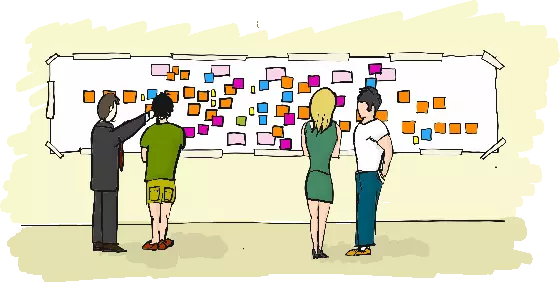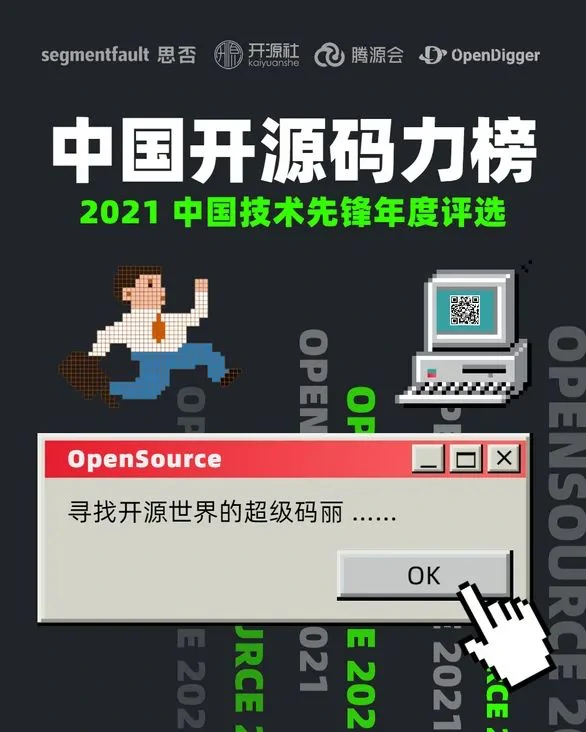Friday BOT has been refactored to using NestJS framework, by following the Domain-driven Design (DDD) and the Command Query Responsibility Segregation (CQRS) this week, by merging this HUGE(307 files changed) Pull Request:
Background
For a long time, I’m planning to build Wechaty bot with an Event-Driven Architecture (EDA). The first EDA cloud service for Wechaty I have designed is the Wechaty token discovery service 5 years ago, it helps Wechaty instances to discover each other by their token, and make remote calls to each other by JSON-RPC payload, via a center WebSocket server provided by the community.
The most beautiful part of the EDA is that it can decouple the sub-systems, and make the system more flexible and scalable. In the past 5 years, I’ve built a lot of EDA services, like @chatie/io server and wechaty/io-client, I’ve learned a lot of things from them.
Besides the EDA, we are doing our best to make the Wechaty API to be concise and easy to be understand and use, by using the most intuitive names for all the APIs. We built a plugin layer based on the basic APIs, and the plugin layer successfully helps the Wechaty to be more flexible and scalable.
The Friday BOT
Friday BOT is a Wechaty bot, which is in charge of help us to manage the community. It has lots of features, for example, the most basic features are automatically accept new friend requests, sending them a welcome message, and sending them a invitation to join the community chat room.
Some of more advanced features are:
- Forward messages across the 20+ different chat rooms on multiple Instant Messaging (IM) platforms, current includes 10+ WeChat groups, one Gitter channel, one QQ group, one WhatsApp group, with 3600+ developers.
- Recognize the message with different languages like English and Chinese, and forward the message to the right chat room.
- Help the BOT5 Club to organize the seminar and meetup, in the WeChat room, with the power of the bot5-assistant plugin.
- Answer the FAQ in the chat room, with the power of the Azure Congnitive Service QnAMaker plugin.
- Update the chatie statuspage to record the the community status.
- Provide a Math Master Game powered by the Wechaty Vorpal pugin
- Connect the Freshdesk & Intercom tickets to the Wechaty, with the power of the Freshdesk plugin and Intercom plugin.
- Provide a Voting to Kickout plugin to kickout the bad guys in the community, by counting the thumb-down votes from the community.
- and more …
With Friday BOT get more and more features, the code base is growing, and the community is growing.
Domain-driven Design (DDD)
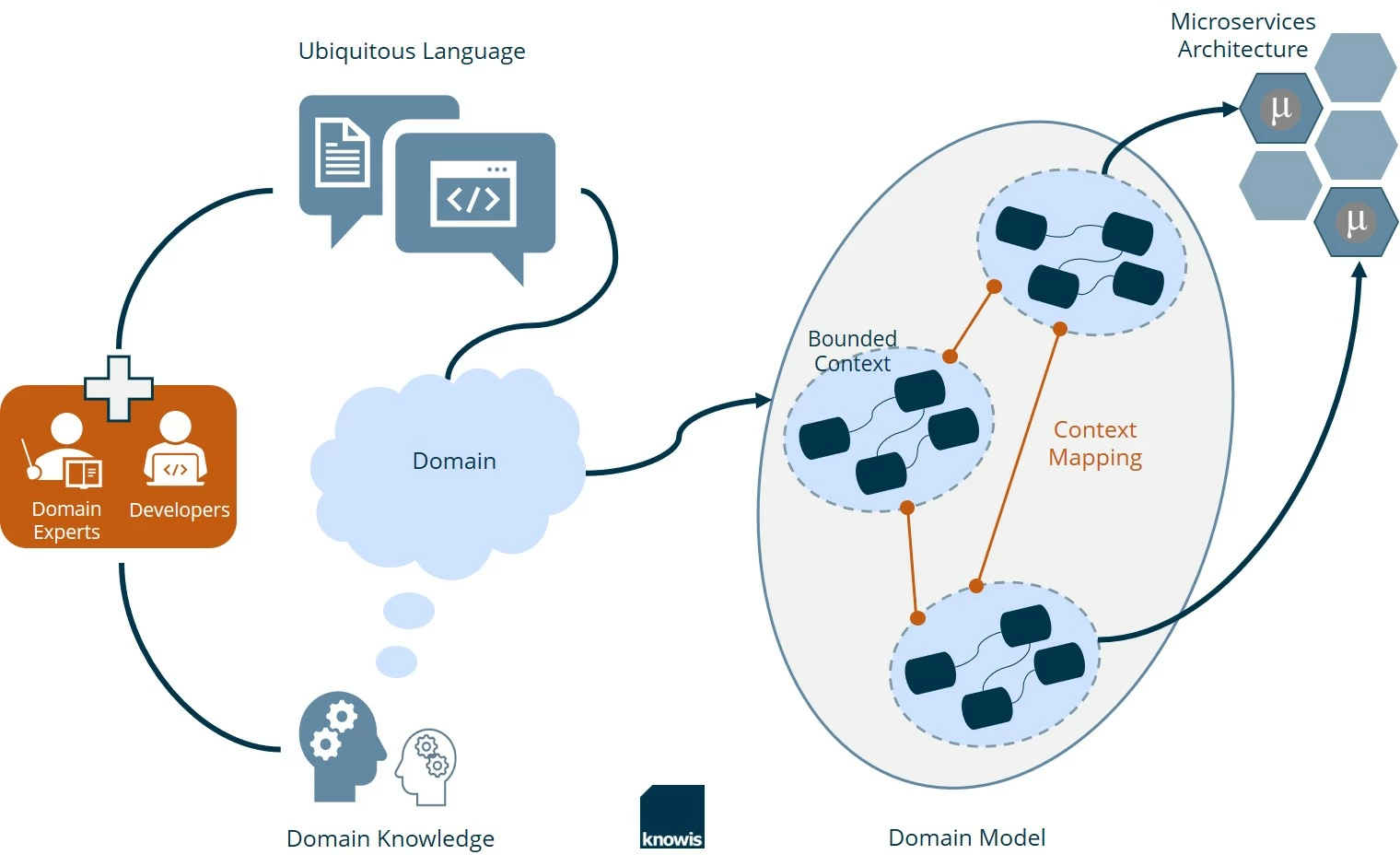
Image source: DOMAIN-DRIVEN DESIGN: STRUCTURED MODELING OF COMPLEX SOFTWARE SYSTEMS IN BANKING
Domain Driven Design (DDD) is about mapping business domain concepts into software artifacts.
— InfoQ
In my understanding, the soul of DDD is a bridge to connect the business people with the software engineers, and make sure they are in the same page and talking about the same things, efficiently.
Some useful resources:
- Design a DDD-oriented microservice
- Domain-Driven Design Starter Modelling Process
- Better Software Design with Application Layer Use Cases
- 关于Akka在事件溯源的若干思考
Event Storming
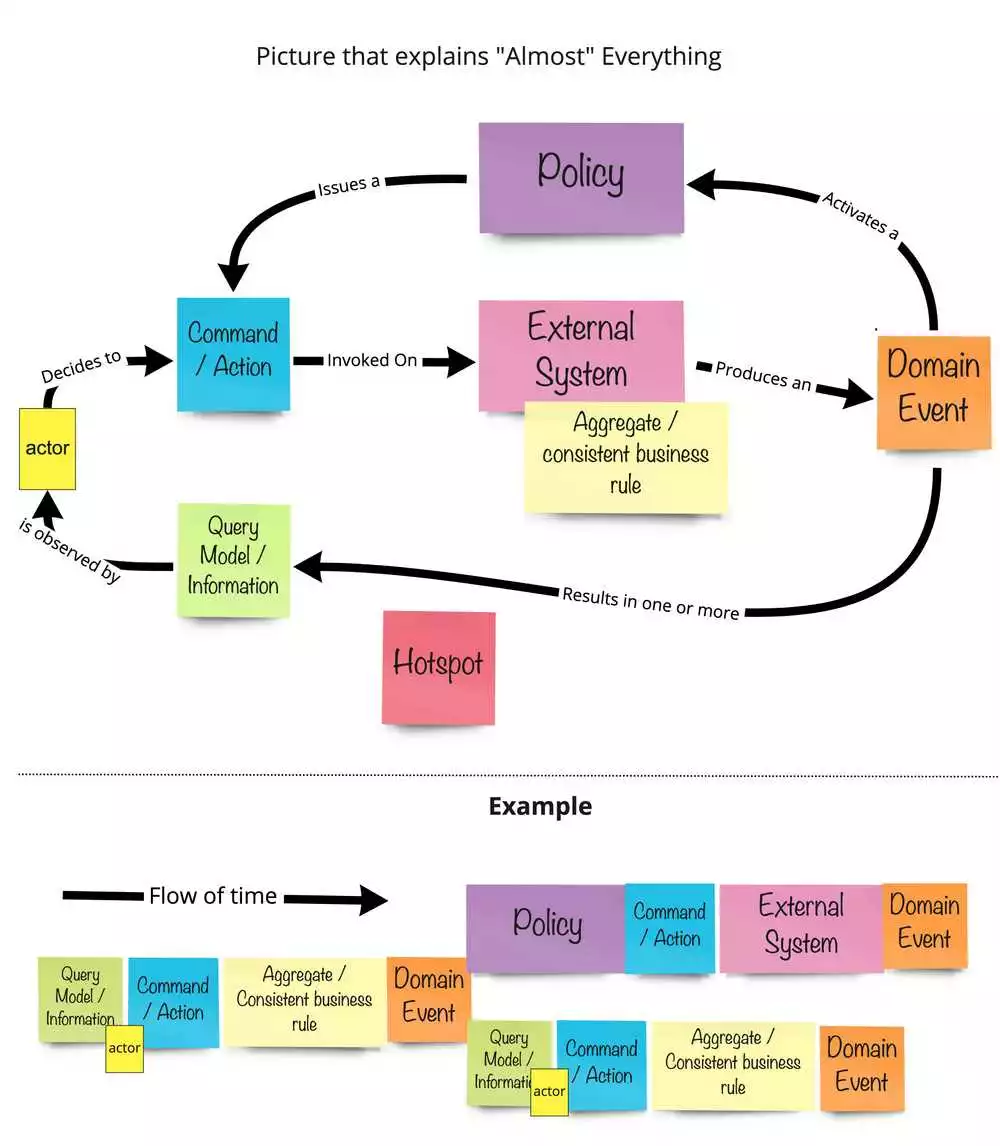
Event Storming is a sprint workshop for a group of both business and engineer people who, together, to analyze the business domain by drawning events flows.
Command Query Responsibility Segregation (CQRS)
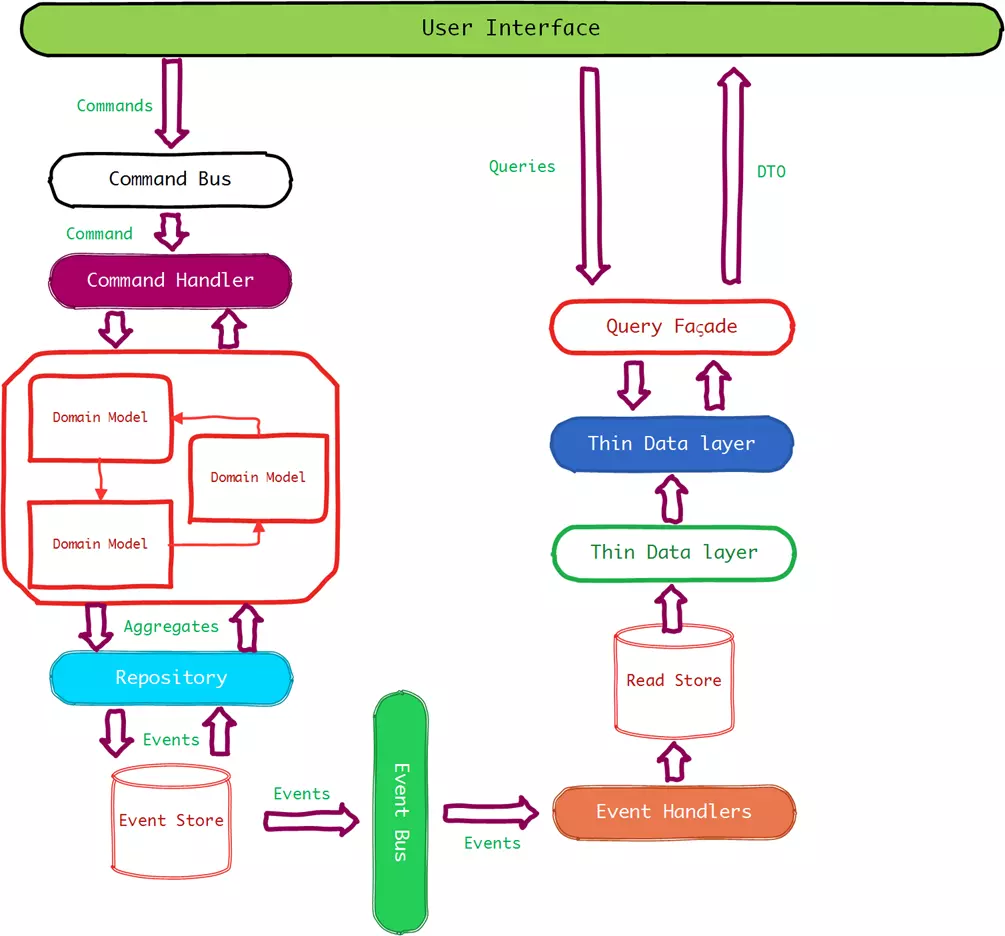
Command Query Responsibility Segregation (CQRS) is a software architecture pattern that separates the command(write) and query(read) layers.
NestJS
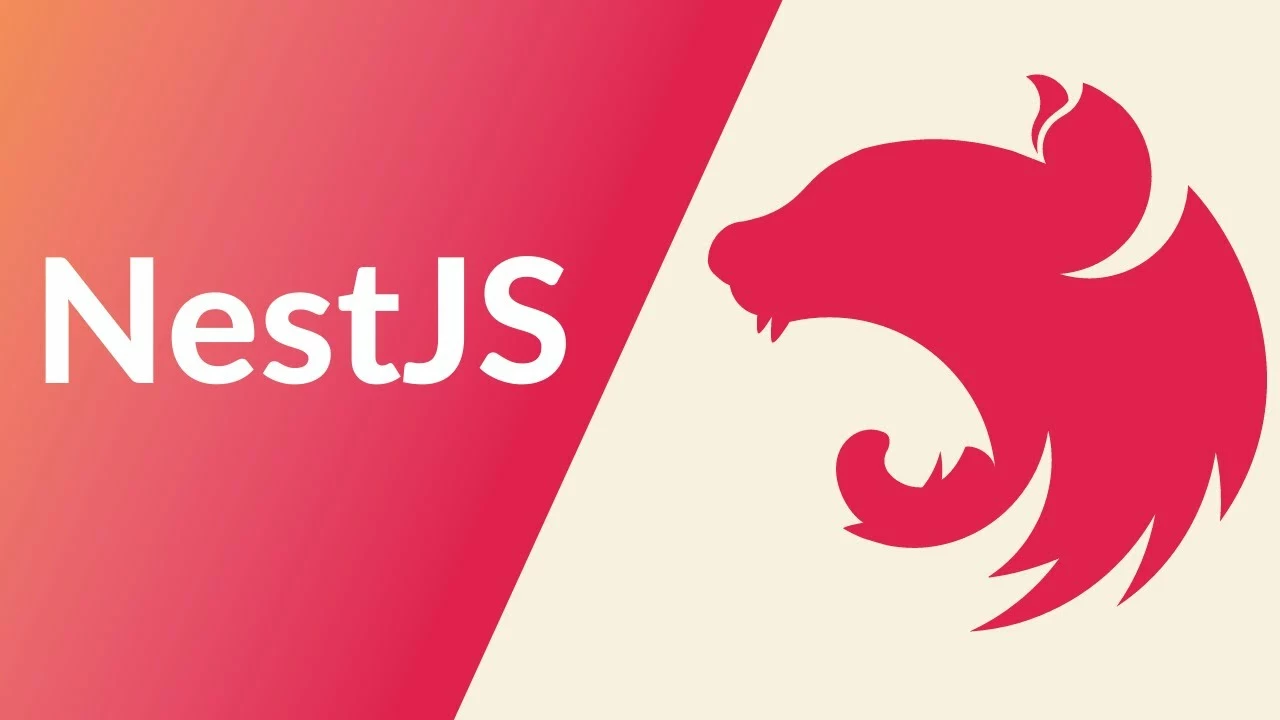
Nest (NestJS) is a framework for building efficient, scalable Node.js server-side applications. It uses progressive TypeScript and combines elements of OOP (Object Oriented Programming), FP (Functional Programming), and FRP (Functional Reactive Programming).
Nest provides an out-of-the-box application architecture which allows developers and teams to create highly testable, scalable, loosely coupled, and easily maintainable applications. The architecture is heavily inspired by Angular.
It has Controlers to handle the HTTP requests, Providers to be injected as dependency (Inversify of Control, IOC), and CQRS which works out-of-the-box.
The New Architecture of Friday BOT
With Friday BOT version 1.13+ and the new architecture, we have modulized the system into a few modules, and we have a lot of features to support the new architecture.
DDD Perspective
- Repository: provide the
WeChat,WhatsApp,QQ,Gitter,OfficialAccount, andWXWorkWechaty instances. - Model/AggregateRoot: each Wechaty instance is treated as a model/aggregate root.
- Commands & Queries & Events: they are defined to support the business logic, and they are the core of the system.
Domain Saga: Event to Command
graph LR
classDef event fill:DarkGoldenRod
classDef command fill:blue
classDef query fill:green
ME(PuppetMessageReceivedEvent):::event
GTE[fab:fa-gitter GitterCommunityMessageReceivedEvent]:::event
WCE[fab:fa-weixin WeChatCommunityMessageReceivedEvent]:::event
WAE[fab:fa-whatsapp WhatsAppCommunityMessageReceivedEvent]:::event
QQE[fab:fa-qq QQCommunityMessageReceivedEvent]:::event
WAC[fab:fa-whatsapp WhatsAppCommunitySendMessageCommand]:::command
QQC[fab:fa-qq QQCommunitySendMessageCommand]:::command
WCC[fab:fa-weixin WeChatCommunitySendMessageCommand]:::command
GTC[fab:fa-gitter GitterCommunitySendMessageCommand]:::command
S{Saga}
GTS{fab:fa-gitter}
WCS{fab:fa-weixin}
WAS{fab:fa-whatsapp}
QQS{fab:fa-qq}
ME==>S
subgraph Events Saga
S-->GTE
S-->WCE
S-->QQE
S-->WAE
end
subgraph Commands Saga
GTE-->GTS
GTS-->WAC
GTS-->QQC
GTS-->WCC
WCE-->WCS
WCS-->WAC
WCS-->QQC
WCS-->GTC
WAE-->WAS
WAS-->GTC
WAS-->QQC
WAS-->WCC
QQE-->QQS
QQS-->WAC
QQS-->GTC
QQS-->WCC
end
Text Message
graph LR
subgraph Community Send Message Command Saga
classDef event fill:DarkGoldenRod
classDef command fill:blue
classDef query fill:green
CSC[CommunitySendTextMessageCommand]:::command
SMC_S[fa:fa-signature SendMessageCommand Signature + Text]:::command
TNQ[GetTalkerNameQuery]:::query
CNQ[GetChannelNameQuery]:::query
CSC-->CNQ & TNQ
CNQ & TNQ --> SMC_S
end
Non-text Message
graph LR
subgraph Community Send Message Command Saga
classDef event fill:DarkGoldenRod
classDef command fill:blue
classDef query fill:green
CSC[CommunitySendMessageCommand]:::command
SMC_S[fa:fa-signature SendMessageCommand Signature]:::command
SMC_N[fa:fa-photo-film SendMessageCommand Non-text]:::command
TNQ[GetTalkerNameQuery]:::query
CNQ[GetChannelNameQuery]:::query
CSC-->CNQ & TNQ
CNQ & TNQ --> SMC_S
CSC-->SMC_N
end
Application & Domain
sequenceDiagram
participant User
participant Application
participant Domain
User->>Application: original message
Application->>Domain: PuppetMessageReceivedEvent
Domain->>Domain: XXXCommunityMessageReceivedEvent
Domain->>Domain: XXXCommunitySendMessageCommand
Domain->>Application: XXXQuery
Application->>Domain:
Domain->>Application: PuppetSendMessageCommand
Application->>User: forwarded message
Lays & Dependencies in DDD
Most enterprise applications with significant business and technical complexity are defined by multiple layers. The layers are a logical artifact, and are not related to the deployment of the service. They exist to help developers manage the complexity in the code. Different layers (like the domain model layer versus the presentation layer, etc.) might have different types, which mandate translations between those types.
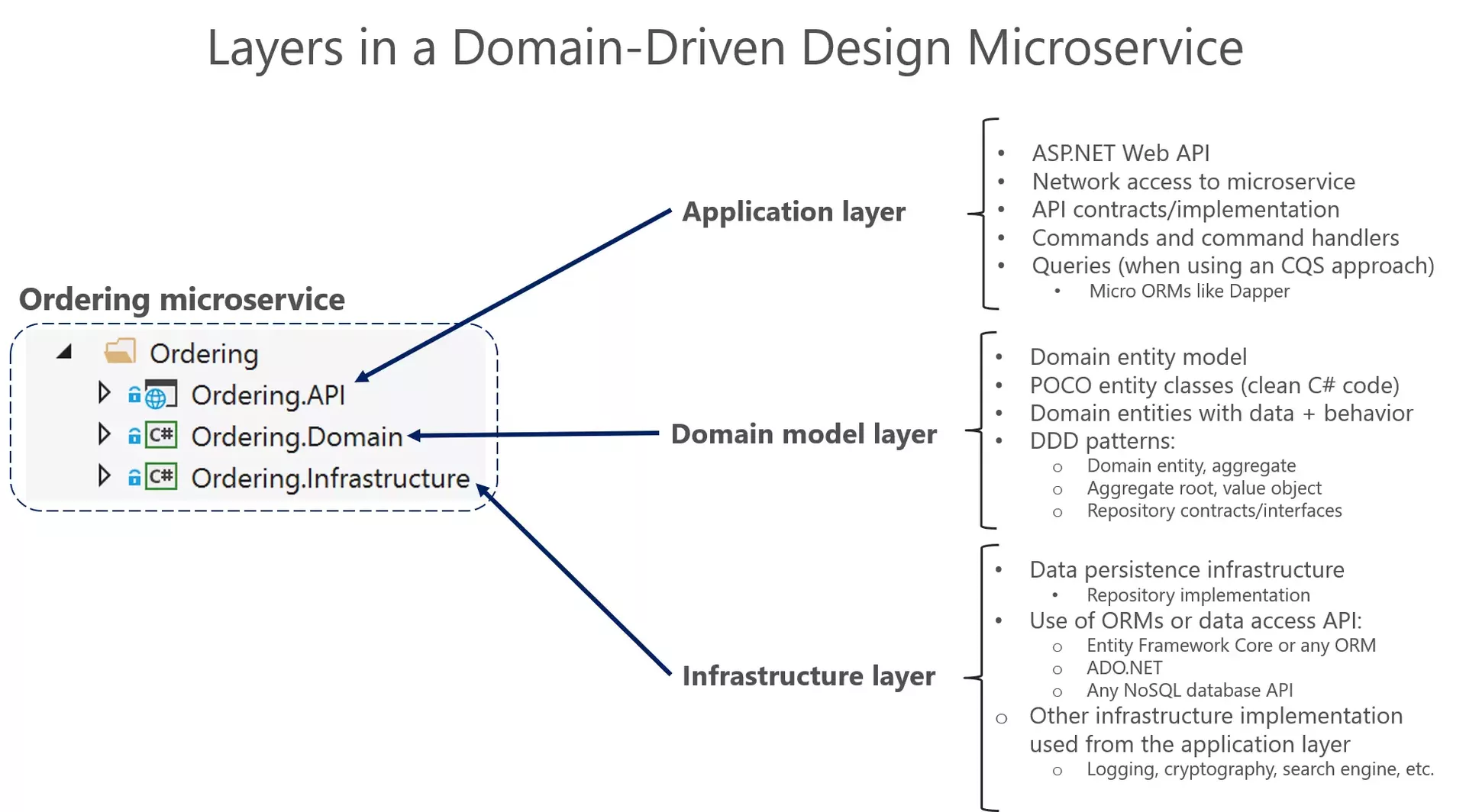
- Domain Layer: Responsible for representing concepts of the business, information about the business situation, and business rules. S
- Application Layer: Defines the jobs the software is supposed to do and directs the expressive domain objects to work out problems.
- Infrastructure Layer: How the data that is initially held in domain entities (in memory) is persisted in databases or another persistent store.
Dependencies:
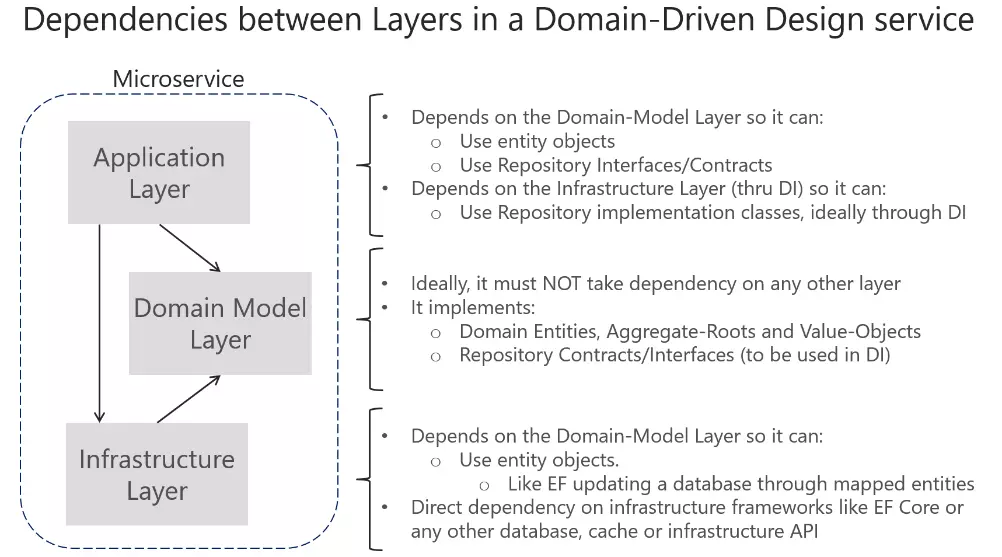
NestJS Perspective
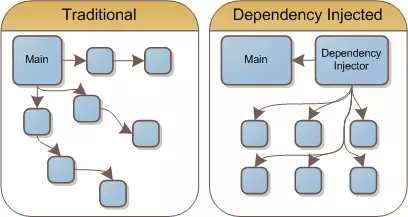
Devopedia. 2022. “Dependency Injection.” Version 5, February 15. Accessed 2022-02-15.
- Controller: The controller is the entry point of the HTTP sub-system.
- Application: 3rd party APIs.
- Core: business logics, such as
statuspageandsync-community-rooms - Infrastructure: low-level supporting services, such as
EnvVar,finis, etc. - WechatyEvents: the Event-driven architecture of Wechaty, such as
PuppetMessageReceivedEvent,PuppetMessageSentEvent, etc. - WechatyRepository: provide the Wechaty instances.
- WechatySettings: provide the settings from pre-defined properties and environment variables.
- FridayModule: main module of Friday BOT, where the whole system is assembled.
- Sagas: using RxJS to convert
EventtoCommands - Unit test: using
marbleto test the event streaming system
All the above modules are in the src/ folder, they are working under the Inverse of Control (IOC) pattern powered by NestJS.
To-do List
- Design the CQRS system for Wechaty, and publish it as wechaty-cqrs NPM module.
- Finish the Event-Driven Architecture (EDA) module for Wechaty, and publish it as
wechaty-actorNPM module. - Publish a NestJS module
wechaty-nestfor easily integrating thewechaty-actorNPM module to NestJS
Source Code
The source code of Friday BOT is available on GitHub
You can join our Gitter network if you aren’t already a member.
